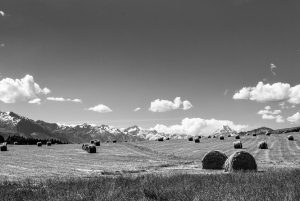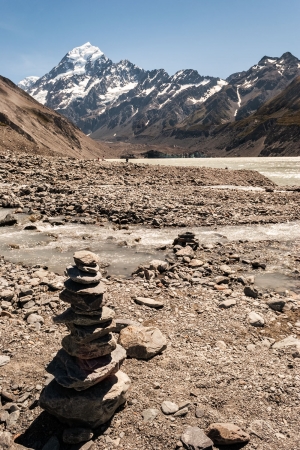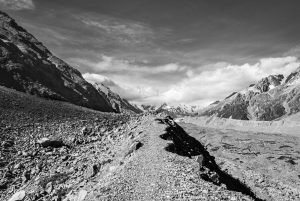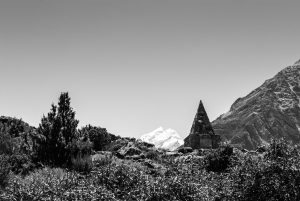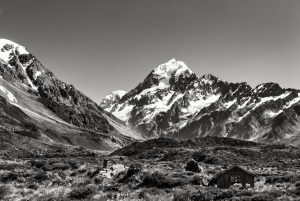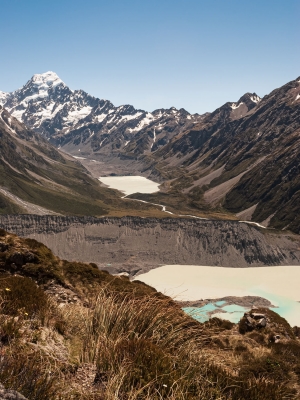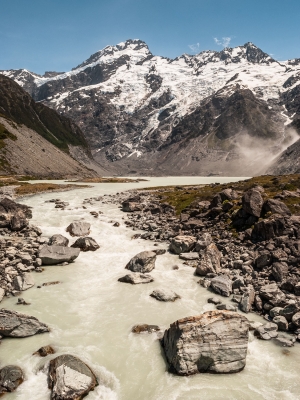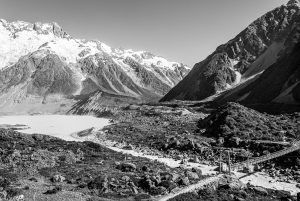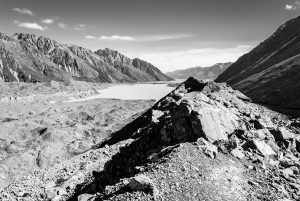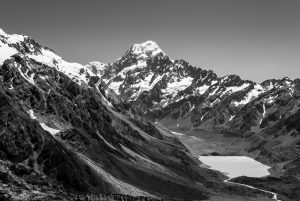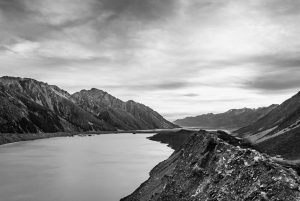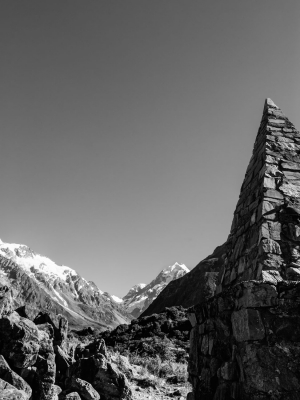Home > New Zealand > Aoraki Mount Cook
Aoraki Mount Cook
Strutting its rocky and rugged stuff at a height of 3,724 metres, Aoraki-Mount Cook is the highest mountain in New Zealand. It's the centrepiece of the Southern Alps mountain range running the length of the country's South Island (Te Ika-a-Māui). The three summits of Aoraki-Mount Cook consist of the Low Peak (3,593 metres), Middle Peak (3,717) and High Peak.
Previously even higher, an avalanche in December 1991 consisting of 10 million cubic metres of snow and rock slides reduced its height by 10 metres. A further two decades of erosion caused the ice cap to reduce by another 30 metres.
The Legend of Aoraki
According to Māori legend, Aoraki was a young boy. He and his three brothers were the sons of Rakinui, the Sky Father. On their voyage around the Papatuanuku, (Earth Mother) their canoe became stranded on a reef and overturned.
Aoraki and his brothers climbed onto the top side of their canoe. However, the south wind froze them and turned them into stone. Their canoe became the Te Waka o Aoraki, (Aoraki-Mount Cook) and their prows, the Marlborough Sounds. Aoraki, the tallest, became the highest peak, and his brothers became the Kā Tiritiri o te Moana (The Southern Alps).
The Ngāi Tahu, the main iwi (tribe) of New Zealand's southern region, consider Aoraki as the most sacred of the ancestors that they had descended from. Aoraki brings the iwi with its sense of community and purpose and remains the physical form of Aoraki and the link between the worlds of nature and the supernatural.
European Exploration of Mount Cook
In January 1848, the European sailor Captain John Lord Stokes was dispatched to New Zealand by the British Royal Navy in the HMS Acheron. Arriving in the Hermes-class wooden paddle sloop in November of the same year he embarked upon a coastal journey of surveillance. The first such survey since the British explorer, navigator and cartographer, Captain James Cook's visit in the 1700s.
Stokes surveyed the land until 1851 giving Aoraki the name 'Mount Cook' in honour of the British explorer. Captain Cook of the Royal Navy, sailed the very first ship (The Endeavour) to circumnavigate New Zealand in 1771.
In March of the same year, due to budget cuts within the Royal Navy, HMS Acheron was ordered to be laid up in Sydney, Australia. Whereupon, Stokes and her crew returned to England and the paddle sloop remained in Sydney until being sold in 1855.
Photographing Aoraki-Mount Cook
New Zealand's highest peak forms part of the Aoraki-Mount Cook National Park, designated as such in October 1953. The park consists of reserves that were established as early as 1887 to protect the area's significant vegetation and landscape.
Most of the park is of alpine terrain with over 40% consisting of glaciers, including the Tasman Glacier, New Zealand's largest at 27 kilometres long. There are over twenty peaks within the park exceeding 3000 metres and mountaineers regard the area to be the best climbing region in Australasia.
Considering such terrain the area is surprisingly accessible. Highway 80 leads to Mount Cook village. This well-surfaced road skirts the western shoreline of the pristine creamy blue glacial Lake Pukaki. The village serves as the base for explorations into this alpine region and is the place for hotels, campgrounds, fuel and food supplies.
Numerous well-marked tracks within the park lead to alpine tarns and spectacular glacier views. Such walking tracks include The Governors Bush, Glencoe and Bowen Bush routes. Each of which will take under an hour to complete and offer an easy trek through native bush to numerous lookout points, where encounters with kea (mountain parrots) are a common occurrence.
For a more sweaty excursion The Red Tarns, Kea Point and the Hooker Valley Track each take around two hours in and out. Furthermore, the mountain pass routes of Mueller, Copland and Ball passes are a sure-fire way to feel some serious cold back sweat by taking you high up into glorious alpine territory.
All in all, there's enough in this part of Aotearoa to keep any picture maker busier a one-armed barista with a queue full of hipsters demanding wifi so they can research beard sculpting techniques.
Completely Useless Facts about Aoraki-Mount Cook
- Abel Tasman was the first European to sight Aoraki. The Dutch navigator did so in 1642
- The first ascent of the peak was recorded in 1894
- Celebrated mountaineer and New Zealand's favourite son, Sir Edmund Hillary trained here for his successful May 1953 ascent of Everest
Have a wemooch elsewhere...
Inspired?
Thinking about heading off for a long adventure in the land of the long white cloud?
You'll need a few things to come together for it all to work out. There's some useful stuff to be clicked and pressed below.
